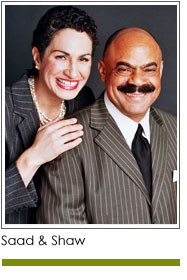 Fundraising is about asking for money. That’s the common perception. But is it the truth? Here’s what we have learned from our extensive work with nonprofit organizations, colleges and universities, individual donors, program officers and foundation executives: fundraising is about much more than asking for money. Individual solicitations, proposal submissions, 5K runs, and galas are methods and tactics. Behind these are the fundamentals of your nonprofit’s business. These fundamentals often influence giving and the amount of a gift.
Fundraising is about asking for money. That’s the common perception. But is it the truth? Here’s what we have learned from our extensive work with nonprofit organizations, colleges and universities, individual donors, program officers and foundation executives: fundraising is about much more than asking for money. Individual solicitations, proposal submissions, 5K runs, and galas are methods and tactics. Behind these are the fundamentals of your nonprofit’s business. These fundamentals often influence giving and the amount of a gift.
Here are a few examples of business decisions, missteps and indecisions that can contribute to a lack of investment in nonprofits.
1. Fail to articulate and diligently pursue your niche
2. Operate without a multi-year strategic plan
3. Seek capital investments without a strategy for growing revenue for operations
4. Accept a gift for a specific purpose and use it for another purpose.
5. Be slow in sending out thank you letters. Create a form letter and send it out with a computer generated signature at the end of the month.
6. Allocate funds in ways that are not in line with your core priorities
7. Offer executive compensation that is out of line with salaries of other employees and the community
8. Isolate your organization from community stakeholders, the business community and those you serve
Many of above are things we have heard from major donors. One thing we know about major donors is that not all of them start out as major donors. And many do not announce themselves as such. This is true of individual donors as well as foundations and corporations. Treat everyone well. Demonstrate that you are serious about your business and communicate that consistently in words and in actions.
Here’s a recent quote from a major donor, “You have to recognize my giving. Not just for me, but to inspire others. People don’t understand that in recognizing me you are inspiring others to give.” Don’t make the blunder of minimizing the contributions of major donors. If you don’t have a donor recognition program, put one in place. Be consistent in how you recognize donors. Value your relationships. And don’t be deceived by people who downplay a desire for recognition. Very few people will tell you directly, “I want to be recognized.” It is your job to recognize donors in a first class way. Don’t be afraid to consider naming opportunities as appropriate.
In regards to gifts from foundations and corporations: remember that people work in these institutions. They remember whether you submit your report on time, if you invite them to events, update them on your progress, and – most importantly – whether or not you achieve the goals outlined in your proposal.
Take care of the business of running a nonprofit: it will support your fundraising.
Copyright 2014 – Mel and Pearl Shaw
Mel and Pearl Shaw position nonprofits, colleges and universities for fundraising success. For help with your campaign visit www.saadandshaw.com or call (901) 522-8727.











